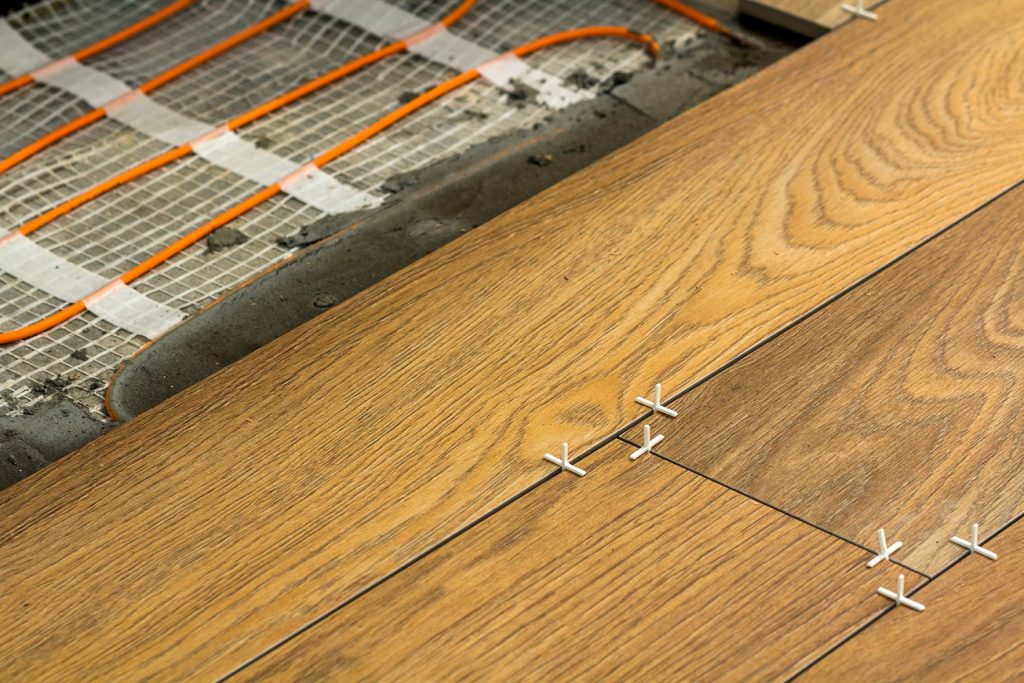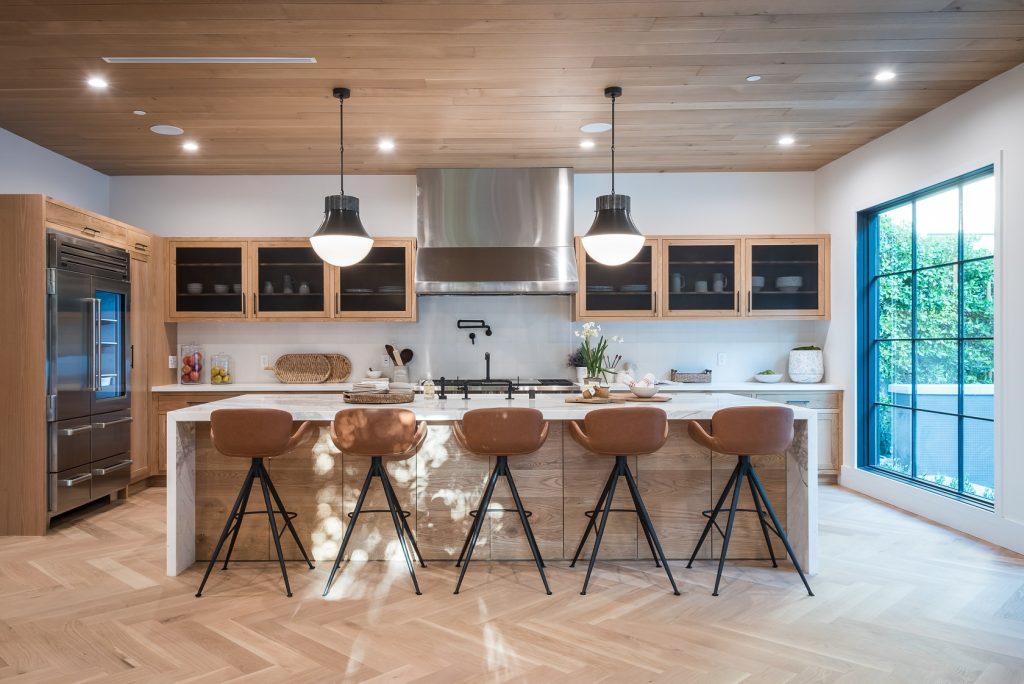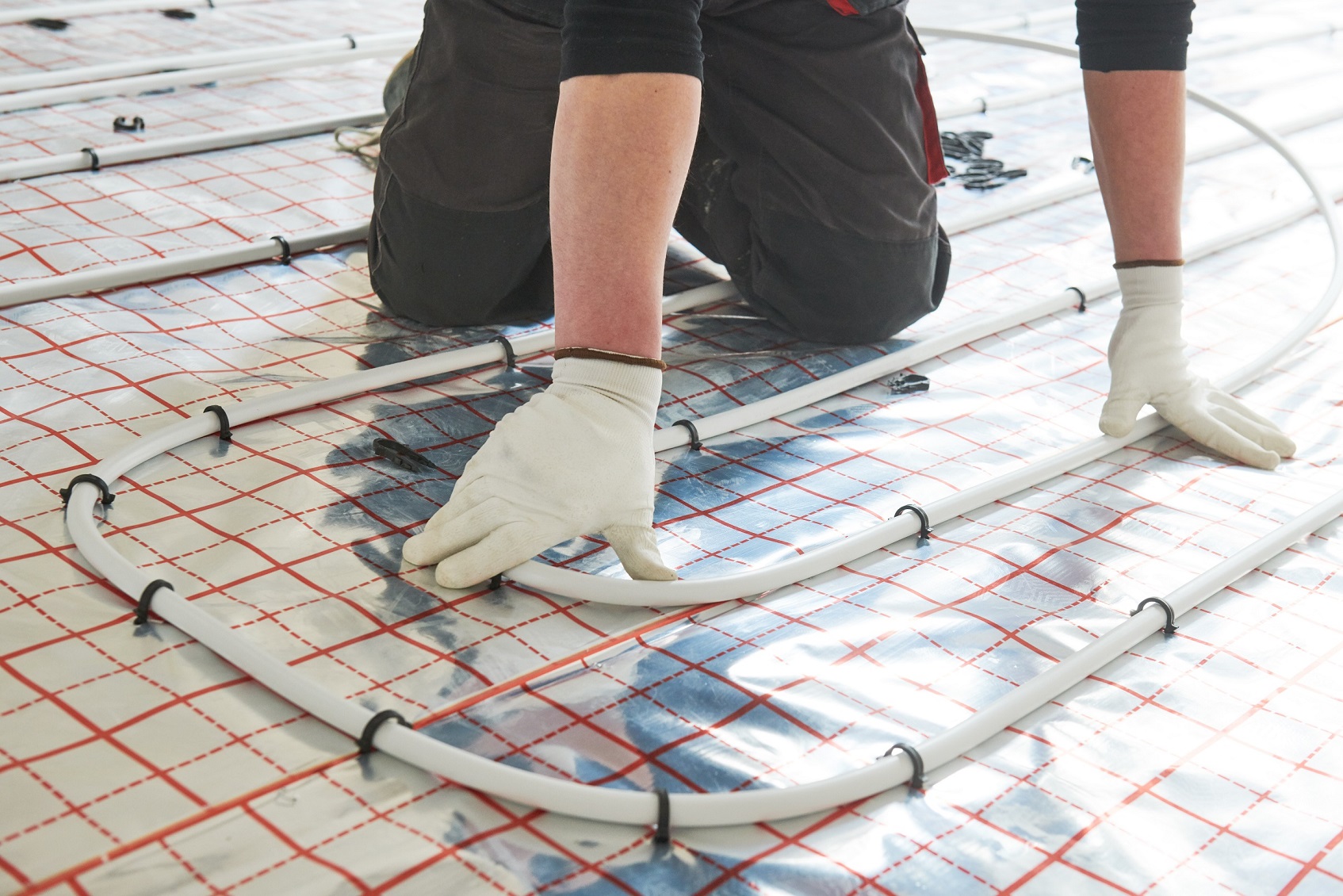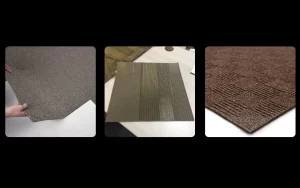Here in Alberta, it can get cold. Really cold. Installing heated flooring may seem like a fantastic option. Walking on freezing floors is never ideal, and having radiant floors in your kitchen, basement, or bathroom can really warm up your home — literally. If you’re considering installing heated flooring in your home, read our blog on the benefits of heated floors as well as average costs. We’d love to talk with you about your flooring needs!
How Do Heated Floors Work

Heated floors, also called radiant floor heating, work by heating the people and objects in your home directly, rather than the air (like a furnace does). Heated floors are typically either water or electric based systems, meaning that the underfloor that is installed either warms your floors using wires and electricity or warm water and plumbing. Both forms of heated flooring work to warm up your home by having the heat radiate directly from the floors and into objects which keeps the room warm. Typically, you can heat a room quicker and more efficiently (less power and heat necessary) with radiant flooring than with a furnace. However, if your room has a lot of heat transfer, the radiant flooring will not work as well. If you’re unsure how your rooms would fair with heated floors, give us a call and we would be happy to help!
Benefits of Heated Flooring
There are many benefits to heated flooring! Here are some of our top advantages to installing radiant flooring.
1. Energy Efficient
Radiant flooring is energy efficient as it provides consistent, uniform heat that isn’t lost to the air. In-floor heating only needs to run at about 29°C in order to heat a room, and it typically only takes half an hour to bring a room completely up to temperature. This allows you to save on electricity, as well as customize how warm your home is on a room-to-room basis. Rooms you don’t use as often can be set much cooler, further saving on electricity as you only heat the spaces you need to.
2. Convenience
Radiant floor heating is convenient as it allows you to heat rooms specific to your needs, has no noise, and doesn’t require maintenance! Most radiant flooring systems are warrantied for over two decades. The added convenience of being far more quiet than a typical furnace system can be incredibly beneficial. We’ve all been woken up by the loud sound of your furnace kicking on, radiant floors are much more subtle.
3. Great for Allergies
If you are sensitive to air-borne allergens, radiant flooring can be a blessing. Since there is far less air movement required to heat the home, dust and allergens don’t get forced into the furnace system and blown about. Radiant flooring allows you to warm your home without disrupting any particles.
4. Simple Installation
Heated floors are actually quite simple to install, especially if you schedule it in as part of your flooring renovation. Electric heated floors come in tiles or rolls that you simply lay down underneath your flooring. Radiant flooring is installed directly under your flooring, which means there’s no need for additional renovations for duct work
5. Luxury
Heated flooring adds an element of luxury to your home. The feeling of warmth radiating through the floors can be incredibly soothing, and the efficient, quiet warming of a room has a luxuriousness to it in itself. If you’re planning on installing new flooring anyways, adding heated floors can add extra elegance to your room.

Disadvantages of Heated Flooring
Although heated flooring comes with a lot of great advantages, there are a few disadvantages to consider before installing it.
1. You’ll have to replace your flooring
If you’re already planning on installing new floors, this isn’t much of an issue. However, radiant flooring can’t be installed under existing floors, so you’ll need to factor in the expense of new floors along with the radiant heating. The specialists here at LCF are always able to help you pick great new flooring to go along with your radiant heating installation, and we always have promotions and specials running, so be sure to stay tuned!
2. Adds to your floor height
Because you’re adding another layer to your flooring installation, it will increase your flooring height. Adding heated floors will sometimes increase your flooring height by half to one inch, depending on if you add insulation boards underneath for ultimate energy efficiency. Although an inch is not detrimental to a room, it is something to consider.
3. Installation Time
Installing heated floors, although not complicated, does take some time. If you’re getting new flooring installed, it usually only takes a couple days. However, adding heated flooring will often double the installation time as radiant heating requires a level floor, so you’ll need to install a self-leveling compound.
4. Cost
Radiant heating, although saving you energy costs in the long run, is not cheap. Radiant flooring can cost anywhere up to $25 a square foot. This will significantly increase your renovation costs, so if you’re considering installing heated floors, you’ll have to budget for it.
How Much Does Radiant Heat Cost?
Costs to install radiant heat flooring varies based on the type of radiant flooring and whether or not you’re bringing in a professional. Radiant flooring that is water-based costs between $6 and $20 a square foot, while electric flooring can be from $8 to $15. Electric floor heating can be installed as a DIY project, while hydronic (water-based) requires a professional. If you’re asking a professional to perform the installation, it will typically cost around $20 a square foot to have your heated flooring installed. This cost can sometimes be reduced if it’s built into an existing renovation or as part of a new home construction project. If you’re considering heated flooring for your new house, it can cost an additional $15000 to $50000, depending on the type of heated flooring and size of your home.
What Kind of Flooring Works Best for Radiant Floor Heating?

Most flooring types can have radiant heating installed underneath. The most common flooring types are tile, stone, hardwood, and luxury vinyl. There are underfloor heating systems that can be installed under carpet as well, but be sure to purchase radiant heating that is safe for the flooring type. The most common choice for radiant heating is tile or stone, though, as these materials heat up the fastest. If you’re not sure what type of heated flooring to purchase, talk to a professional! Here at LCF, we’d be happy to help you pick the right flooring to go with radiant heating.
What’s the Resale Value of Heated Flooring?
Even though adding heated flooring is expensive, it’s an investment that is often rewarded. Houses that have radiant floor heating often sell faster, as buyers tend to be attracted to the opulent associations with heated floors. Heated flooring is also energy efficient, so buyers will often be attracted to the lower heating cost of the home. Generally, the investment of heated floors can help attract more buyers as well as help you get a better price when selling your home.
LCF Flooring provides the highest quality flooring solutions in Edmonton. If you’re looking to renovate your flooring, give us a call or come visit our showroom! We have a huge selection of flooring products that are compatible with heated floors. One of our experts will happily talk to you about the right flooring choice to pair with radiant floor heating, as well as additional things to consider when looking into heated flooring.








